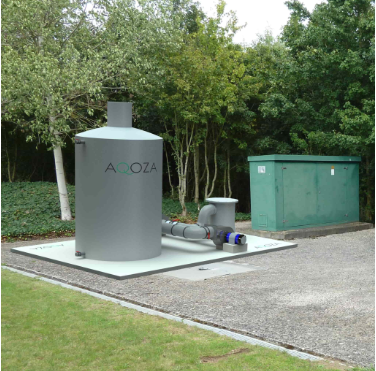Exploring Effective Odour Control Systems for Sewage Treatment Plants
Introduction
Sewage treatment plants play a pivotal role in maintaining public health and environmental sustainability. However, the generation of unpleasant odours remains a significant challenge for these facilities. The release of foul odours can lead to community complaints and potential health risks. To address this issue, implementing efficient odour control systems for sewage treatment plants is essential. In this article, we will delve into the importance of sewage treatment plant odour control and explore the best systems available to tackle this problem effectively.
Importance of Sewage Treatment Plant Odour Control
Odour emissions in sewage treatment plants primarily arise from the decomposition of organic matter and the production of volatile compounds such as hydrogen sulfide. These odours can result in discomfort for nearby residents and create an unfavorable perception of the plant. Moreover, prolonged exposure to noxious odours may lead to respiratory issues and other health concerns.
Implementing an effective odour control system for sewage treatment plants is vital for maintaining a healthy relationship between the plants and their surroundings. It helps prevent the dispersion of odorous compounds, ensures compliance with environmental regulations, and fosters a positive public image. By investing in sewage treatment plant odour control, these facilities can minimize community complaints, enhance their reputation, and contribute to a cleaner and healthier environment.
Best Odour Control System manufacturers for Sewage Treatment Plant
Biological Odour Control Systems
Biofilters: Biofilters are highly efficient and environmentally friendly methods for sewage treatment plant odour control. They utilize microorganisms to degrade odorous compounds. Air containing odorous gases is passed through an organic medium, such as wood chips or compost, which acts as a habitat for the microorganisms. As the air flows through the biofilter, the microorganisms break down the odorous compounds, resulting in the release of clean air. Biofilters are versatile, cost-effective, and sustainable options for sewage treatment plant odour control.
Bioscrubbers: Bioscrubbers operate in a wet environment and employ a liquid scrubbing medium to absorb and neutralize odorous gases in sewage treatment plants. These systems are particularly effective in removing hydrogen sulfide and volatile organic compounds (VOCs) from the air. Bioscrubbers offer high removal efficiency, are easy to maintain, and can be tailored to specific plant requirements.
Chemical Odour Control Systems
Activated Carbon Filters: Activated carbon filters are widely used for adsorbing and capturing odorous compounds in sewage treatment plants. These filters contain porous carbon particles with a large surface area that attract and bind odorous molecules. Activated carbon filters can be used as standalone units or as part of a multi-stage odour control system. They are highly versatile and effective in removing a wide range of odorous gases.
Chemical Scrubbers: Chemical scrubbers utilize a liquid chemical solution to remove odorous gases from the air in sewage treatment plants. The chemical solution reacts with the odorous compounds, neutralizing them or transforming them into non-odorous substances. Chemical scrubbers are particularly suitable for treating concentrated and corrosive gases. They offer high removal efficiency and can be customized to address specific odour challenges.
Physical Odour Control Systems
Odour Enclosures: Odour enclosures involve enclosing odorous process units or storage areas to prevent the release of odours into the atmosphere. This method is often combined with other odour control systems to further minimize emissions. Odour enclosures are effective in containing odours at the source and reducing their impact on the surrounding environment.
Thermal Oxidizers: Thermal oxidizers are suitable for treating odorous gases with high concentrations of volatile organic compounds (VOCs). These systems employ high temperatures to break down odorous compounds into carbon dioxide and water vapor, rendering them odourless. Thermal oxidizers provide a reliable and efficient solution for treating challenging odour streams.
For more odour control solutions we offer, please visit our website.

